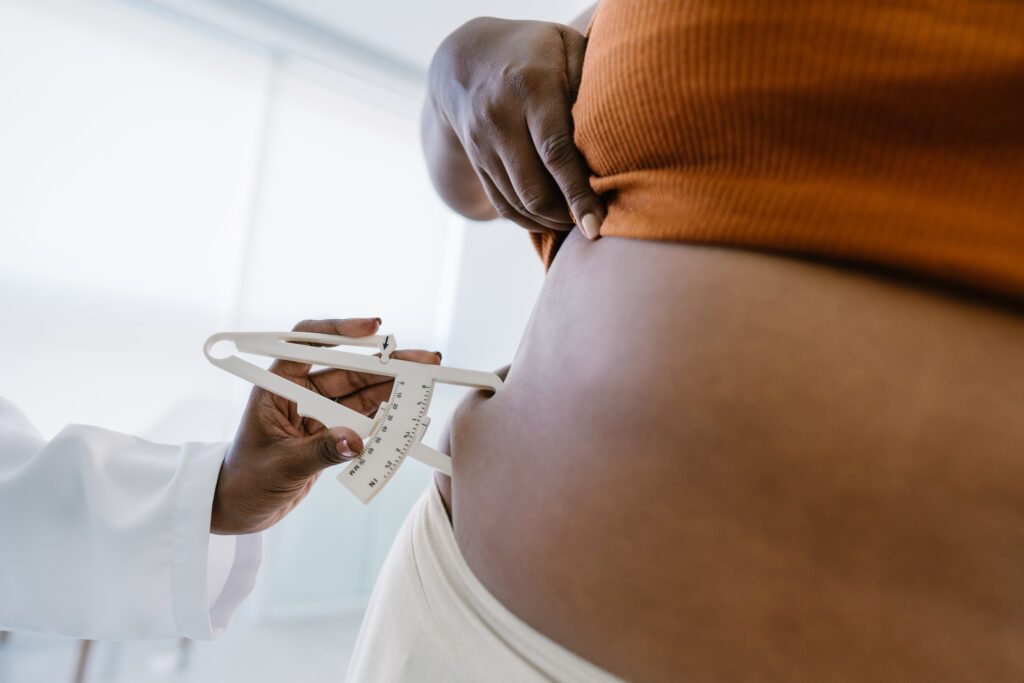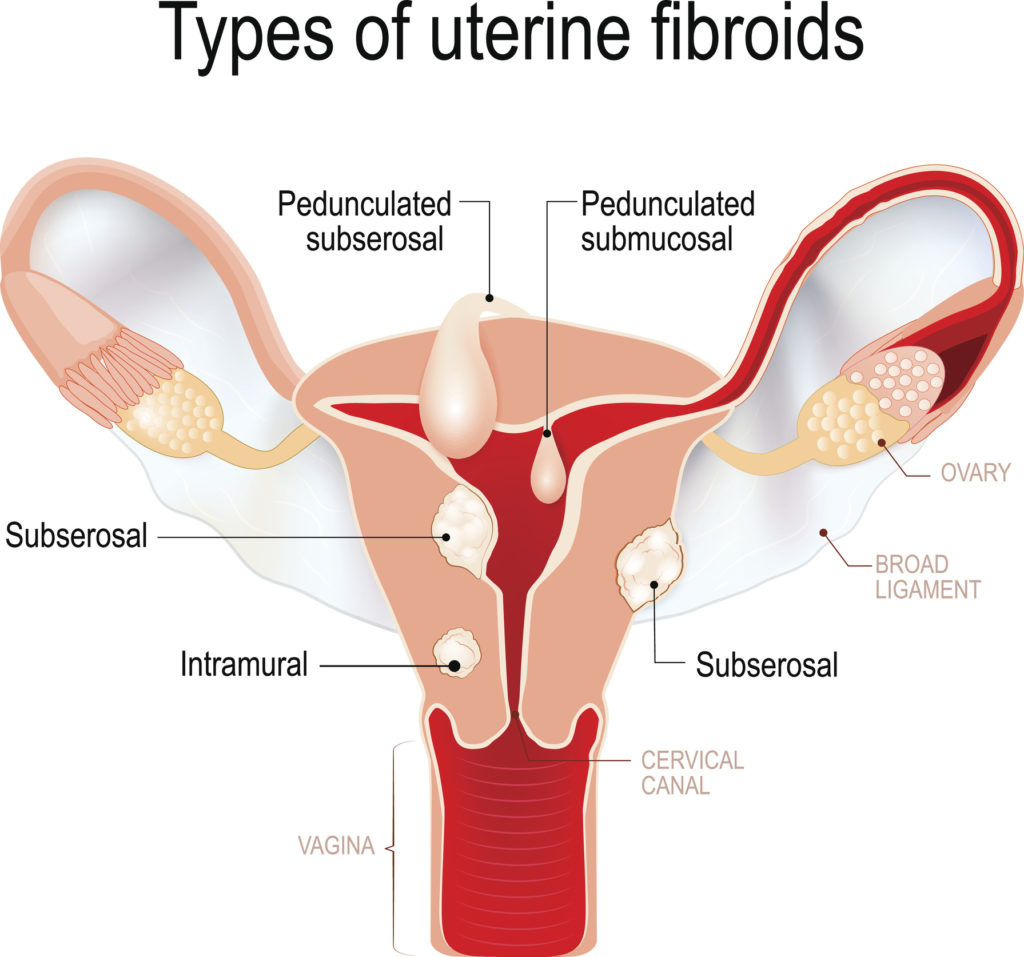
You've probably tried everything but the stubborn fat around your belly still isn't going away. Maybe you’re thinking your metabolism is malfunctioning or maybe you’re just too old to have a six-pack.
One of the main reasons why your fat won't go away has nothing to do with your exercise routine, it could be your attitude.
Stress and poor hormonal imbalance changes may end up causing weight gain. Our adrenal glands release hormones like adrenaline and cortisol during stressful periods. Cortisol causes body fat to be stored, especially in the stomach area, when levels rise.
Another main reason for women's belly fat is that your belly could be bulging from the inside out--meaning, it could be fibroids!
What Are Fibroids?
Uterine fibroids are non-cancerous tumors (made from smooth muscle and connective tissue) that grow inside the wall of the uterus. Fibroids can be as small as a grapeseed or as big as a grapefruit! While some women have one fibroid, others have as many as forty.
Who Gets Fibroids?
Any woman can develop fibroids. It is estimated that 20 to 80 percent of women will develop fibroids by
50-years old. Women who are between 30 to 40 years are more likely to develop fibroids.
However, black women are 3 times more likely to develop fibroids than white women and statistics show that black women develop fibroids as early as 25 years old. Doctors are uncertain about what causes fibroids.

- Hair relaxer chemicals
- Vitamin D deficiency
- Environmental and physical stress
- Diets high in fatty meats and low in vegetables
- Age
- Genetics
- Obesity
- Hormonal changes
- Family history of fibroids
How Fibroids Create Belly Fat
Although fibroids are non-cancerous and do not increase your chances for uterine cancer, fibroids cause several symptoms and a bulging belly is one of them. How? Studies have shown that progesterone and estrogen stimulate fibroid growth. Estrogen levels increase during pregnancy and child-bearing years, causing fibroids to increase in size.
Since fibroids are not hollow cysts, a large fibroid can weigh between 20 to 40 pounds! As the size and weight of the fibroid increases, so does the number on your scale. Large fibroids can cause bloating and create what looks to be excess fat in your midsection.
Fibroids can cause a domino effect that may lead to weight gain. Large fibroids can cause excruciating pain, constipation, back pain, and long, heavy menstrual cycles. Heavy menstrual cycles often lead to anemia, where your body doesn’t produce adequate red blood cells.
When you don’t have enough red blood cells to carry oxygen through your body, you can experience fatigue. In turn, fatigue can cause you to feel unmotivated about working out and over-eating can be a coping mechanism for managing pain. This can lead to gaining unwanted pounds, especially in the midsection.
RELATED: 7 Fibroid-Fighting Foods You’ll Love
Other Signs and Symptoms of Fibroids
Not only can fibroids lead to unwanted bloating and a fluffy waistline, you may experience these symptoms, too:
- Frequent urination
- Pressure and pain in the pelvis
- Pain during sex
- Difficulty emptying your bladder
- Leg pain
- Sudden sharp pain in the pelvis
If you are doing all of the right things in the gym and in the kitchen along with experiencing any of these symptoms, talk to your gynecologist about the possibility of fibroids.
RELATED: Find A Gynecologist
Currently, fibroids that interfere with day-to-day activities and quality of life are removed with surgery. However, scientists are continuing to research fibroid stem cells to develop treatment options that are less invasive.

Dr. Candace McMillon-Dantley is on a mission to inspire and educate women to health. She is the author of Woman, Take Off Your Cape!, a collection of stories that reflect the lives of real-women who put everything first, except themselves. She is the creator of The Doc Knows, a health and wellness site for women. Connect with Dr. Candace on Instagram @drcandace.








